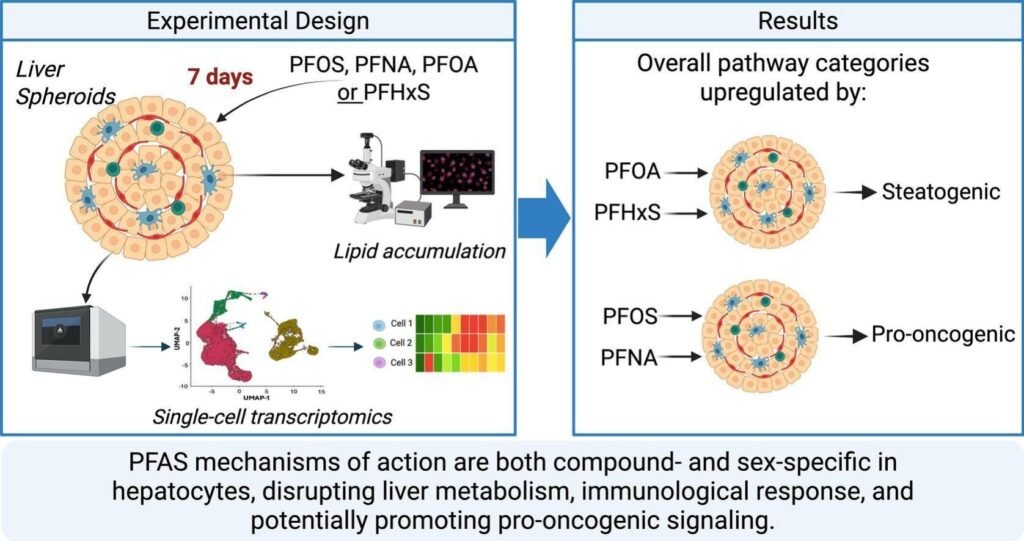Per- and polyfluoroalkyl substances (PFAS) are synthetic chemicals that have been found to accumulate in the human body over time. Recent research from the Keck School of Medicine of USC has shed light on the detrimental effects of PFAS on the liver, linking them to liver disease and cancer. The study, published in the journal Environment International, delved into the cellular changes caused by different types of PFAS and their impact on liver function.
The liver plays a crucial role in removing toxins from the body, making it particularly susceptible to the harmful effects of PFAS. These chemicals can enter the body through contaminated drinking water, food packaging, and consumer products, posing a significant threat to liver health. While previous studies have established a connection between PFAS exposure and liver issues, the underlying biological mechanisms have remained elusive.
To better understand how PFAS disrupt healthy liver function, researchers utilized sophisticated 3D models known as liver spheroids. These models, constructed using cells from human donors, mimic the structure of the liver and provide insights into cellular interactions. By exposing these liver spheroids to four common PFAS chemicals, the researchers were able to observe changes in gene expression and fat accumulation at the cellular level.
The study revealed that each type of PFAS had a distinct effect on liver cells, with some triggering fat accumulation and others causing cell damage associated with cancer. Furthermore, the researchers observed differences in how male and female liver cells responded to PFAS exposure, suggesting that biological mechanisms of liver damage may vary by sex.
The findings from this study have important implications for developing targeted treatments for PFAS-related liver damage. Some existing drugs that regulate fat metabolism in the liver could potentially be repurposed to mitigate the harmful effects of PFAS. Additionally, there is a pressing need to limit exposure to PFAS through both regulatory measures and individual actions, such as drinking filtered water and avoiding nonstick cookware.
Moving forward, the researchers are continuing their investigations to understand the combined effects of multiple PFAS chemicals on human liver cells. By gaining a deeper understanding of how PFAS disrupt liver function, they hope to pave the way for more effective treatment strategies and ultimately reduce the health risks associated with these pervasive chemicals.


